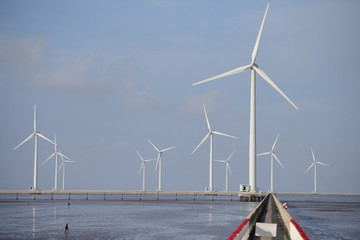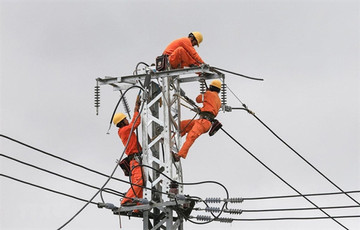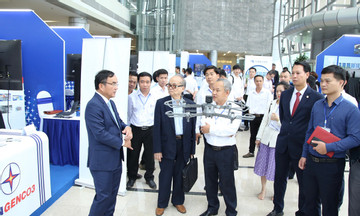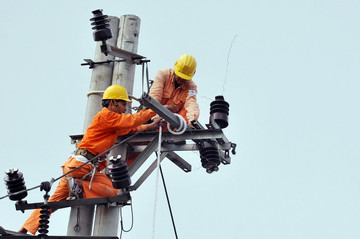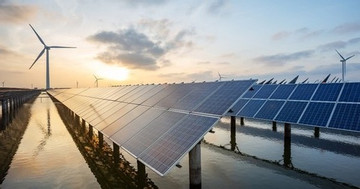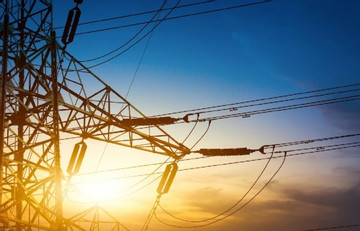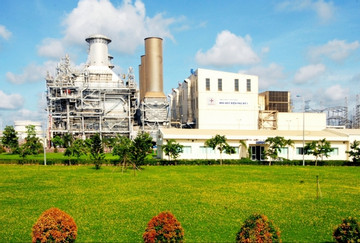- © Copyright of Vietnamnet Global.
- Tel: 024 3772 7988 Fax: (024) 37722734
- Email: [email protected]
EVN
Update news EVN
Higher electricity production and import expected this year
Electricity output and import this year are estimated at 284.5 billion kilowatt hours (kWh), up around 5.5% over last year, according to the latest power supply plan approved by the Ministry of Industry and Trade.
EVN’s proposed electricity price hike under consideration
The Ministry of Industry and Trade has been gathering feedback on a proposal of Vietnam Electricity Group (EVN) for increasing electricity prices.
EVN faces loss of VND31 trillion
Regarding the estimated loss of VND 31,360 billion of Electricity of Vietnam (EVN) Group, Nguyen Hoang Anh, Chairman of the Committee for the Management of State Capital at Enterprises, said "this is a very concerning issue".
Renewable energy booms as better prices offered
As the government in the past set attractive electricity prices using the FIT (feed in tariff) mechanism, a boom period of renewable energy occurred.
EVN demands flexible mechanism for electricity prices
Vietnam Electricity (EVN), the country's largest power company, has proposed a new price mechanism, one that is better tuned to input price fluctuations, for electricity.
Vietnam Electricity, European Investment Bank ink MoU on sustainable energy development
Vietnam Electricity (EVN) and the European Investment Bank (EIB) have signed a memorandum of understanding to create a prerequisite for the EIB to help with the Vietnamese group’s sustainable development and energy transition.
Ministry considering EVN’s proposal for electricity price hikes
The Ministry of Industry and Trade is reviewing Vietnam Electricity's (EVN) proposal to increase electricity prices as rising input cost was weighing on the largest power company with record loss anticipated for this year.
AI used to predict renewable-energy capacity
Wind and solar power will account for an increasing proportion of Vietnam’s total electricity capacity.
Fuel prices soar, EVN faces huge losses
Due to the global rise of coal, oil and gas prices, EVN’s electricity production costs and purchase costs have increased sharply. The group may incur losses of up to VND64.8 trillion in 2022.
EVN proposes reducing purchase price of wind and solar power
Vietnam Electricity (EVN) proposed the Ministry of Industry and Trade reduce the purchase price of wind and solar power by 30 percent compared to the current one.
EVN proposes wind energy projects in Gulf of Tonkin
Vietnam Electricity Group (EVN) is seeking approval from the Government to develop 4,000MW wind power projects off the Gulf of Tonkin in northern Vietnam to ensure national energy security.
New electricity price system does not affect majority of customers: expert
The two electricity price systems which the Ministry of Industry and Trade (MOIT) has designed will not have a big impact on most people.
New electricity price system proposed
The Ministry of Industry and Trade (MOIT) is collecting opinions about the new draft electricity prices. For daily household use, there would be five instead of six electricity price levels.
Ministry to keep coal-fired thermal power projects
To avoid legal risks, thermal power projects in the 8th national power development plan need to be retained, especially BOT (build, operate, transfer) projects, which involve foreign investors, the Ministry of Industry and Trade (MOIT) said.
EVN refuses to accept electricity price negotiations for renewable power projects
EVN believes that determining the average annual power output of wind and solar power plants to determine electricity prices would be more complicated than traditional energy projects.
Energy-saving taking top spot in solutions for electricity crisis
With the demand for electricity increasing rapidly and supply and a sense of economical use more limited, saving electricity is deemed an important tool during possible periods of crisis in the future.
EVN asked to take over Phu My 2.2 and Phu My 3 thermopower plants
The Ministry of Industry and Trade (MoIT) asked the prime minister to assign EVN to handle Phu My 2.2 and Phu My 3 thermal power plants once the 20-year contract terminates.
High costs and legal impasses hinder LNG energy development in Vietnam
Too many variables and over-reliance on imports have been hindering Viet Nam's plan to build power plants running on liquefied natural gas (LNG), industry experts have said.
EVN chosen to take over multi-billion dollar power plants
Both the Electricity of Vietnam (EVN) and PetroVietnam want to take over the two thermopower plants when foreign investors transfer the plants to Vietnam after 20 years of operation.
Coal shortages puts thermal power plants at risk
Vietnam Electricity (EVN) has said that the amount of coal supplied to its thermal power plants (TPP) fell short of the contractual amounts, putting them at risk.



